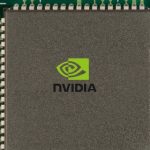AMD presents a new step forward in visual processing with the launch of FidelityFX Super Resolution 4 (FSR 4), signaling an update to its approach to graphics upscaling. As gaming and creative content continue to demand higher visual fidelity, industry watchers have kept a close eye on each incremental hardware and software improvement. The move toward FSR 4 comes at a time when users expect better clarity and detail, with only minor sacrifices in performance metrics compared to earlier releases. The shift brings the potential for more responsive gameplay while retaining the precise rendering that players and developers require.
FSR 3, AMD’s previous iteration, was notable for its initial adoption by both game studios and end users, often praised for its open-source nature and accessibility across a range of GPUs from different manufacturers. At that time, the primary emphasis was on balancing visual upgrades with robust frame rates, though some users noted artifacting and minor fluctuations in visual stability. The emerging FSR 4 now claims to address these limitations while introducing additional refinements in temporal stability and finer image sharpness. Compared to what users previously experienced, FSR 4 reveals modest improvements in overall performance, yet the leap in clarity might offer a more apparent benefit to those seeking smoother, sharper visuals.
How Does FSR 4 Refine Image Stability?
AMD’s FSR 4 implements refined algorithms that target both the enhancement of visual detail and the reduction of instability during rapid motion or scene changes. By analyzing a broader set of frame data, the system supports a steadier rendering process, reducing flickering and other distracting artifacts. The company remarked,
“FSR 4 provides a considerable step up in visual consistency and detail over previous versions.”
Does FSR 4 Impact Game Performance?
Reports suggest that, despite the notable gains in image quality, the overall performance difference between FSR 4 and FSR 3 remains slight. Tests indicate a minimal decrease in framerate with the new version, but not to the extent that it detracts from the general user experience. AMD representatives highlighted,
“Our focus was to optimize for stability and clarity, with only a marginal performance differential.”
Which Brands and Products Support FSR 4?
FSR 4 integrates with AMD’s existing GPU platforms such as the Radeon RX and is also poised to reach broader hardware ecosystems due to its open architecture. Major game engines and several AAA titles have reportedly started workflows to implement FSR 4, suggesting broader support in upcoming releases. As FSR has typically positioned itself as hardware-agnostic, the adoption of version 4 could extend to wider segments of the PC gaming and professional visualization market.
Choosing upscaling technologies depends heavily on a user’s priorities: image clarity, system compatibility, and the trade-offs between frame rate and visual fidelity. AMD’s approach with FSR 4 aims to provide an option closely matching the clarity provided by competing solutions such as NVIDIA’s DLSS, which also seeks to blend performance gains with improved graphic detail. However, FSR’s open-source foundation allows for more flexible integration across devices. Readers weighing up upgrade options should consider their display requirements, the sorts of games or applications they use, and whether nominal performance differences may impact their intended use. FSR 4’s balance of modest performance shift against more substantial visual gains positions it for users putting a premium on image sharpness without significant hardware upgrades.










